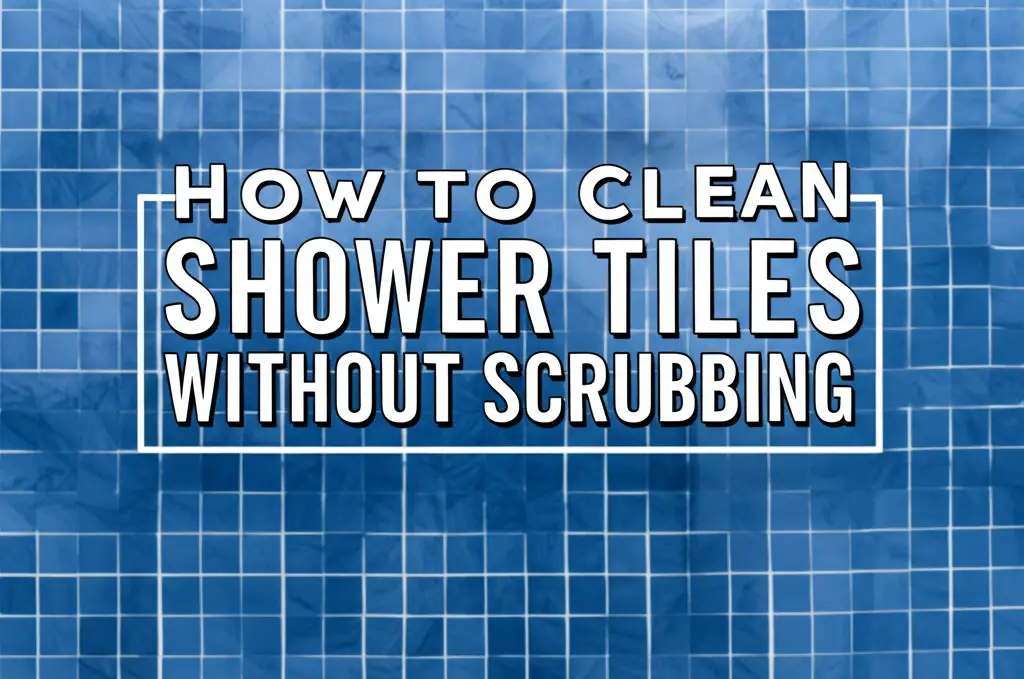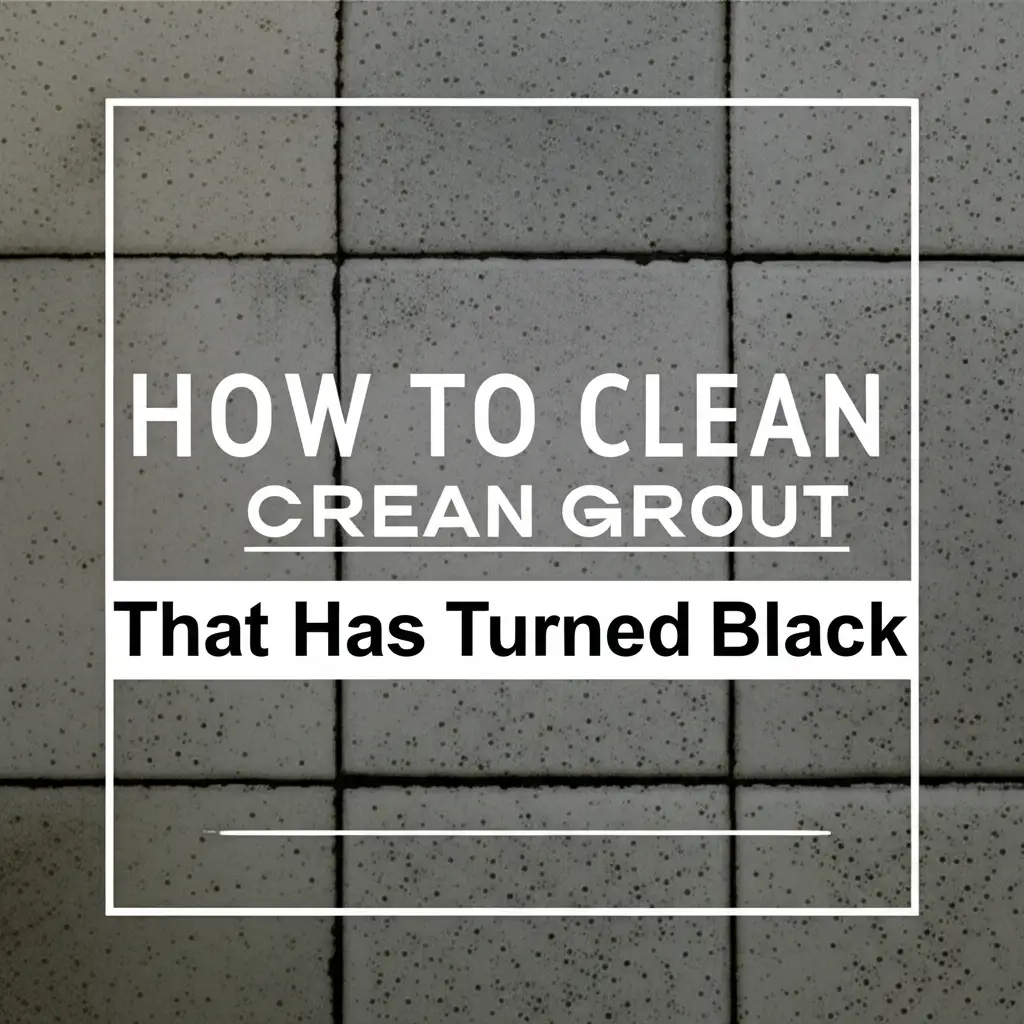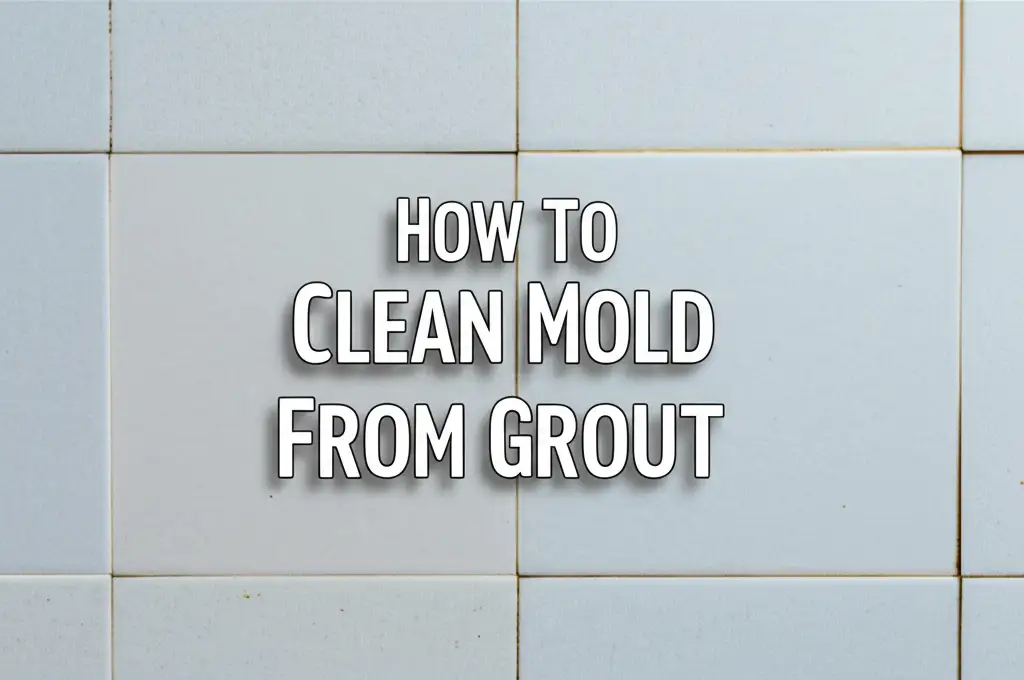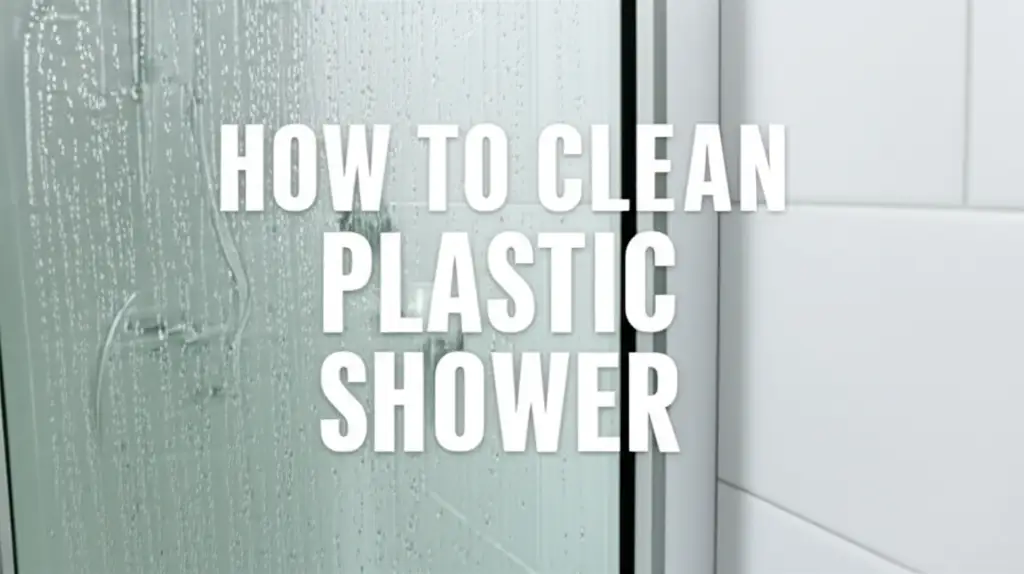· Home Cleaning · 15 min read
How To Clean Shower Tiles Without Scrubbing

Clean Shower Tiles Without Scrubbing: Effortless Methods
Cleaning shower tiles often feels like a never-ending chore. The thought of scrubbing away at soap scum, mildew, and hard water stains can be exhausting. Many people simply avoid this task because it seems too difficult. But what if I told you there are effective ways to clean shower tiles without scrubbing?
You can achieve sparkling clean tiles with minimal effort. This guide will show you several techniques and products that do most of the work for you. We will explore natural remedies, commercial solutions, and smart maintenance tips. Get ready to transform your cleaning routine.
Takeaway
- Embrace Prevention: Daily actions reduce dirt buildup.
- Use Powerful Solvents: Vinegar and baking soda break down grime.
- Try Commercial Sprays: “No-scrub” products dissolve tough stains.
- Consider Steam: High heat lifts dirt easily.
- Maintain Routinely: Consistent, light effort prevents heavy cleaning.
How do you clean shower tiles without scrubbing?
You can clean shower tiles without scrubbing by applying solutions that break down grime. Use a mixture of white vinegar and dish soap, or a paste of baking soda and hydrogen peroxide. Let these sit for extended periods to dissolve stains. Rinse thoroughly with hot water. For ongoing cleanliness, use a daily shower spray and improve ventilation.
Understanding the “No-Scrub” Philosophy for Shower Tiles
Many people hate scrubbing. It requires physical effort and time. The “no-scrub” philosophy saves you from this hard work. This approach relies on chemical reactions or physical processes. These processes dissolve dirt, soap scum, and mold from surfaces. You apply a cleaner, let it sit, then rinse.
The main idea is to let the cleaning agent do the hard part. Strong acids or bases react with grime. They break down the bonds holding dirt to your tiles. This means you do not need to rub or scrape. The dirt simply washes away. This method protects your joints and saves time.
We want a clean shower without the strain. This is possible with the right methods. You can achieve excellent results. These methods are often gentler on tile surfaces and grout too. Harsh scrubbing can wear down grout lines.
This philosophy extends beyond just tiles. It applies to many surfaces in your bathroom. Imagine cleaning your entire shower with less effort. It truly changes your outlook on cleaning day. You will find more joy in a clean space.
The Power of Daily Prevention: Your First Line of Defense
Preventing buildup is easier than cleaning it later. A little effort each day saves a lot of work. Daily maintenance keeps your shower tiles looking good. It stops soap scum and mildew from taking hold. This is the cornerstone of any no-scrub cleaning plan.
After each shower, take a few minutes. Use a squeegee on the tiles. This removes water droplets. Water carries minerals that form hard water stains. Removing it stops these stains from forming.
A daily shower spray is also very helpful. You can buy one or make your own. A homemade spray might use white vinegar and water. Mist your tiles lightly after showering. This prevents soap scum and mildew growth. It works by creating an environment where grime cannot easily stick.
Good ventilation also plays a big role. Mold and mildew grow in damp places. Always run your exhaust fan during and after showering. Open a window if possible. This helps dry out the bathroom quickly. Dry surfaces are clean surfaces.
Consistent prevention means you rarely face heavy scrubbing tasks. Your shower always looks fresh. This simple routine makes a big difference. It is the best way to maintain clean shower tiles without scrubbing.
Harnessing Natural Cleaners: Vinegar for Sparkling Tiles
Vinegar is a remarkable natural cleaner. It contains acetic acid. This acid breaks down soap scum, hard water stains, and mildew effectively. It is a safe and affordable option for your shower tiles. You can use white vinegar to clean many bathroom surfaces.
To use vinegar, create a spray solution. Mix equal parts white vinegar and warm water in a spray bottle. For tougher stains, you can use undiluted vinegar. Always test a small, hidden area first. This checks for any adverse reactions with your tile or grout.
Spray the vinegar solution generously onto your shower tiles. Make sure to cover all dirty areas. Let the solution sit for at least 30 minutes. For heavy buildup, leave it for several hours, or even overnight. The acid needs time to work its magic.
After the waiting period, rinse the tiles thoroughly with hot water. You will see the grime wash away. You might use a gentle cloth or sponge for rinsing. Do not scrub hard. The vinegar will have loosened everything. This method works well for general cleaning.
Vinegar can also clean shower heads. Learn more about how to clean a shower head with vinegar. This powerful liquid is a cleaning staple. It makes your tiles shine with minimal effort. It is an effective solution for maintaining a clean shower without scrubbing.
Baking Soda Magic: Tackling Grime and Mildew
Baking soda is another natural cleaning powerhouse. It is a mild abrasive and a natural deodorizer. It works wonders on shower grime, especially when combined with other agents. Baking soda reacts with acids, creating a fizzing action. This fizz helps lift stubborn dirt and stains.
You can make a powerful paste with baking soda. Mix baking soda with a little water or hydrogen peroxide. Add just enough liquid to create a thick paste. This paste is perfect for targeting specific areas of grime or mildew on your tiles. It clings to vertical surfaces better than a liquid spray.
Apply the baking soda paste directly onto dirty tiles or grout lines. Spread it thickly over areas with soap scum, mold, or mildew. Let the paste sit for a minimum of one hour. For very stubborn stains, leave it on overnight. The longer it sits, the more it works.
After the waiting time, rinse the area well with hot water. Use a gentle spray from your showerhead. The baking soda paste will have absorbed and loosened the grime. You will notice the stains easily disappear. This method is highly effective for deep cleaning.
For a deeper dive into using baking soda for showers, explore how to clean a shower with baking soda. Combining baking soda with vinegar can create an even more powerful cleaning reaction. This dynamic duo offers a formidable, no-scrub solution for your shower tiles.
Commercial “No-Scrub” Solutions: What to Look For
Sometimes, natural cleaners are not enough. Commercial “no-scrub” cleaning sprays offer a convenient alternative. These products are specifically formulated to dissolve tough bathroom grime. They save you time and physical effort. When choosing a product, look for specific features.
Identify products labeled “daily shower cleaner” or “no-scrub formula.” Many popular brands offer these. These cleaners often contain mild acids or surfactants. Surfactants break down surface tension. This allows dirt and soap scum to lift away easily. They are designed for quick application.
Read the product instructions carefully. Most require you to spray the tiles after showering. You then leave the product on the surface. There is no need to rinse or wipe. The cleaner continues to work as the shower dries. This consistent application prevents buildup.
Look for formulas that target common shower problems. Some products specialize in soap scum. Others are better for mildew or hard water stains. Choose one that addresses your specific tile issues. Some cleaners also leave a protective layer. This layer makes future cleaning even easier.
Always ensure good ventilation when using commercial products. Some contain strong chemicals. Open windows or run your exhaust fan. These solutions offer a powerful shortcut. They keep your shower tiles clean with minimal effort.
Steam Cleaning: A Gentle Yet Powerful Approach
Steam cleaning offers a chemical-free way to clean shower tiles. It uses high-temperature steam to sanitize surfaces. The heat and moisture loosen dirt, grime, and mold. This method is effective and safe for most tile types. It works without any scrubbing or harsh chemicals.
A handheld steam cleaner is ideal for shower tiles. Fill the cleaner’s reservoir with distilled water. Allow it to heat up fully. Once ready, direct the steam nozzle at your tiles. Move it slowly over the surface. The steam penetrates and melts away buildup.
Focus on grout lines. Steam is excellent at getting into these crevices. It breaks down mildew and discoloration. You will see dirt beginning to drip away. For very stubborn spots, hold the steam over the area a bit longer. The heat helps to disinfect as well.
After steaming, use a microfiber cloth to gently wipe the tiles. The dirt should come off easily. You will not need to apply pressure. The steam does the work of dislodging grime. This leaves your tiles sparkling clean.
Steam cleaning is safe for sensitive individuals. It does not release fumes or leave chemical residues. It is also environmentally friendly. This method is a great investment for a truly no-scrub cleaning routine. It offers deep cleaning without the effort.
Addressing Specific Stains: Mold, Mildew, and Soap Scum
Shower tiles often suffer from specific types of stains. Mold, mildew, and soap scum are the most common culprits. Each type responds best to particular cleaning agents. Understanding these differences helps you choose the right no-scrub approach. You can target these stains effectively.
Mold and mildew are fungi. They thrive in damp, warm environments. You often see them as black, green, or pink spots. White vinegar is excellent against these. Its acetic acid kills mold and mildew spores. For tough spots, a hydrogen peroxide paste with baking soda works well. Apply it and let it sit. These solutions effectively kill and lift the growth.
Soap scum is a white, crusty film. It forms when soap reacts with minerals in hard water. This creates insoluble deposits. Acidic cleaners work best on soap scum. Vinegar is highly effective. Apply a strong vinegar solution. Let it soak for an hour or more. For severe buildup, dedicated soap scum removers (commercial ones) are available. They contain strong solvents that dissolve the scum. Learn more about how to clean soap scum from glass shower doors, as similar principles apply to tiles.
Hard water stains appear as dull, whitish spots or streaks. They are mineral deposits like calcium and magnesium. Acidic cleaners like vinegar or lemon juice dissolve these minerals. Apply an undiluted acidic solution. Let it sit for a good while. For very stubborn hard water stains, commercial descalers may be needed. These cleaners break down mineral bonds. Explore how to clean hard water from a shower head for related insights.
Targeting stains with the right cleaner saves time and effort. You avoid unnecessary scrubbing. The correct product does the hard work.
The Role of Grout in No-Scrub Cleaning
Grout lines are often the dirtiest part of shower tiles. They are porous and trap dirt, soap scum, and mold easily. Cleaning grout without scrubbing can seem challenging. However, the same no-scrub principles apply. You need cleaners that penetrate and lift stains.
Baking soda paste works wonders on grout. Mix baking soda with hydrogen peroxide to form a thick paste. Apply this paste directly onto the grout lines. Use an old toothbrush or a grout brush to apply it. Do not scrub hard, just spread it evenly. Let it sit for several hours or overnight. The peroxide brightens and the baking soda lifts grime.
Oxygen bleach is another effective option for white or light-colored grout. Mix it with water according to package directions. Apply the solution to the grout lines. Let it sit for a good period, then rinse. Oxygen bleach releases oxygen bubbles. These bubbles lift dirt and stains. Always test on an inconspicuous area first.
For persistent mold in grout, a vinegar spray can help. Spray undiluted white vinegar directly onto the moldy grout. Let it sit for an hour. Vinegar kills mold spores. After it sits, rinse thoroughly with water. Ensure good ventilation when using any cleaner.
Sealing your grout after cleaning helps maintain it. A good grout sealer makes the grout less porous. It repels water and prevents future stains. This proactive step extends the life of your no-scrub cleaning. Regular application of a daily shower spray also keeps grout cleaner.
Advanced Tips for Long-Term Shower Tile Cleanliness
Maintaining a clean shower without scrubbing requires smart, consistent habits. Beyond daily sprays and initial deep cleans, there are advanced strategies. These strategies ensure your tiles stay spotless for extended periods. They minimize future cleaning efforts significantly.
Consider installing a water softener if you have hard water. Hard water is a major cause of soap scum and mineral buildup. A softener removes minerals from your water. This means less soap scum forms on your tiles. It reduces the need for frequent cleaning. This is a big investment, but it saves a lot of cleaning time.
Re-seal your grout periodically. Grout sealers protect the porous grout lines. They prevent water, soap, and dirt from penetrating the surface. This makes grout much easier to clean. It also stops mold and mildew from growing deep within the grout. Follow the manufacturer’s instructions for re-sealing frequency.
Improve overall bathroom ventilation. A powerful exhaust fan removes moisture quickly. Moisture is the primary cause of mold and mildew. Keep the fan running during and after showers. Opening a window also helps. Proper airflow keeps your shower tiles dry.
Invest in quality cleaning tools. A good squeegee is essential for daily water removal. A spray bottle allows easy application of cleaning solutions. A microfiber mop or cloth can assist with rinsing. These tools make the no-scrub process even smoother.
These advanced tips help you achieve long-term cleanliness. Your shower tiles will look great with minimal effort. This approach frees up your time for other activities. It changes cleaning from a chore to a simple routine.
Tools and Techniques for Effortless Maintenance
Achieving truly no-scrub shower tiles involves the right tools and smart techniques. These aids enhance the effectiveness of your cleaning solutions. They also simplify the routine. You can keep your shower sparkling with very little physical effort.
A high-quality squeegee is your best friend. Use it after every shower. Glide it across the tiles, glass, and walls. This removes water droplets before they dry. It prevents hard water stains and soap scum from forming. Choose a squeegee with a comfortable handle and a good rubber blade.
A dedicated spray bottle is crucial for applying cleaners. Use one for your daily shower spray. Use another for your vinegar solution. A good spray bottle offers an even mist. This ensures good coverage on your tiles. Consistent application is key to no-scrub success.
Microfiber cloths are excellent for wiping and drying. They are highly absorbent. They also pick up dirt and residue effectively. Use them for any quick wipe-downs or for rinsing off cleaners. They leave surfaces streak-free.
Consider a long-handled brush with soft bristles. You do not use it for scrubbing. Instead, use it for gently spreading solutions on high tiles or hard-to-reach areas. It helps ensure even coverage without bending or straining.
A good ventilation fan is a tool in itself. It removes humidity. This prevents mold and mildew growth. Ensure your fan works efficiently. Clean its vents regularly. This maintains proper airflow.
These simple tools, combined with consistent techniques, make shower tile cleaning effortless. They support the “no-scrub” philosophy perfectly. You will spend less time cleaning and more time enjoying your pristine bathroom.
FAQ Section
How often should I use a no-scrub cleaner on my shower tiles?
For best results, use a daily shower spray after each shower. This prevents buildup. For deeper cleaning with vinegar or baking soda, apply weekly or bi-weekly. Adjust frequency based on how much you use your shower and your water hardness. Consistent, light applications are more effective than infrequent heavy cleans.
Can I use bleach for a no-scrub method on shower tiles?
Bleach can kill mold and whiten grout. However, it is very harsh. It can damage grout over time. It also produces strong fumes. For a no-scrub approach, vinegar or oxygen bleach are safer and often just as effective. They are better for your health and your home’s surfaces.
Is it safe to mix vinegar and baking soda directly on tiles?
Yes, it is safe to use vinegar and baking soda together on tiles. When mixed, they create a fizzing reaction. This reaction helps lift dirt. However, they neutralize each other if mixed before application. For best results, apply baking soda paste first. Then spray with vinegar to create the fizzing action directly on the stain.
Will these no-scrub methods work on black mold in the shower?
For light black mold, vinegar is effective at killing spores. For more severe black mold, a strong baking soda and hydrogen peroxide paste can help. Apply, let sit for several hours, then rinse. Proper ventilation is crucial to prevent recurrence. For very extensive mold, professional help might be needed.
How do I prevent hard water stains on my shower tiles?
Prevent hard water stains by removing water after each shower. Use a squeegee on all tile surfaces. Apply a daily shower spray. This creates a barrier against mineral deposits. Installing a water softener for your home is the most effective long-term solution to hard water issues.
Can I use these methods on all types of shower tiles?
Most no-scrub methods are safe for ceramic, porcelain, and stone tiles. Always test a small, hidden area first, especially with natural stone. Acidic cleaners like vinegar can etch some natural stones. For natural stone, use mild, pH-neutral cleaners or specialized stone cleaners. Steam cleaning is generally safe for all tile types.
Conclusion
Cleaning shower tiles does not have to involve tedious scrubbing. By embracing the “no-scrub” philosophy, you can achieve a sparkling clean bathroom with minimal effort. We explored powerful natural cleaners like vinegar and baking soda. These agents break down grime and stains effectively. We also discussed the benefits of commercial no-scrub sprays and the power of steam.
Remember, prevention is your best friend. Daily squeegeeing and using a regular shower spray significantly reduce buildup. Tackling specific issues like mold, mildew, and soap scum with targeted solutions saves time. Maintaining your grout and ensuring good ventilation also play crucial roles. My hope is that these methods free you from the burden of traditional scrubbing.
Say goodbye to tiresome scrubbing and hello to effortlessly clean shower tiles. Adopt these strategies. You will enjoy a consistently fresh and inviting shower space. Start your no-scrub journey today.
- Shower Tile Cleaning
- No Scrub Cleaning
- Grout Cleaning
- Mold Removal
- Soap Scum




